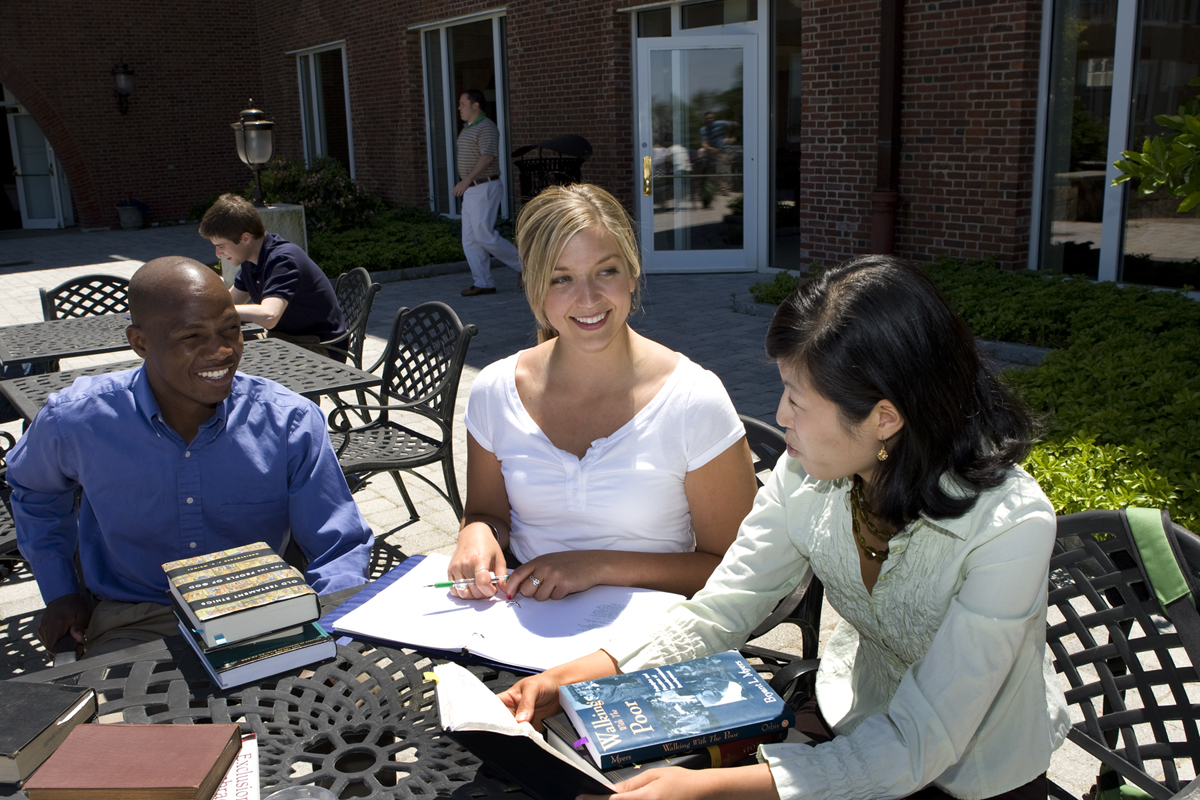 |
| Gordon-Conwell Theological Seminary has a large residential student body, but school leaders are trying to discover how many potential students are interested in nontraditional forms of theological education. |
The precipitous drop in the value of endowments is not the only nightmare disturbing the sleep of theological school boards and administrators these days. A recent decline in enrollment is also haunting many. According to statistics from the Association of Theological Schools in the United States, enrollment in three-year master in divinity (M.Div.) programs remained somewhat flat for more than a decade before beginning to drop two years ago. During the same time, enrollment in two-year master's programs grew modestly but steadily and then flattened.
Robert S. Landrebe, executive vice president and chief financial officer of Gordon-Conwell Theological Seminary, suggests that three factors may account for the greater drop in enrollment in M.Div. programs than in other seminary master's programs:
-
A change in "competition." Pastors without M.Div. degrees — and other prospective students — increasingly look at other options to fill the gap in their theological education. For example, some churches, especially those with multiple ministers on staff, hire pastors who have no theological education, encouraging them to pursue studies while working full time. But the traditional M.Div. also competes with local churches that offer their own courses of study — and with two- year M.A. programs, online degree programs, and conferences.
-
The cost of theological education. In the past, older students may have financed a seminary education by selling a home, taking out a home equity loan, or selling off investments — a course that the current economic climate has made impossible for many. Giving up a full-time job to attend a theological school for three or more years can cost students as much as a quarter of a million dollars in lost earnings, in addition to the hard-dollar cost of tuition.
-
Debt avoidance. Many students are reluctant to take on new debt, especially in hard economic times.
Landrebe is realistic. "Given these trends, we need to ask ourselves what the typical seminary student is going to look like ten years from now," he says.
Programs that meet student needs
"Every seminary has its distinctive attributes and core values," says Landrebe. "I hope we'll never let those things change. At Gordon-Conwell, I believe the M.Div. degree, including our school's commitment to teaching the original languages in which the Bible was written, will always be central to our curriculum. We have both residential and nonresidential programs that are important to us. But how we deliver and price the M.Div. and build other degrees and certificates around it must be adjusted to student demand."
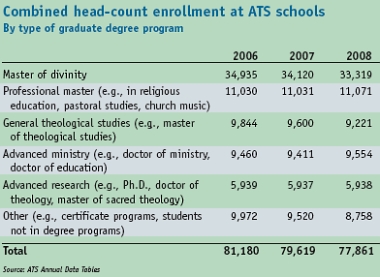 |
Two-year master's programs not only cost less than master of divinity programs in time and money, but they also make part-time study more feasible. Though the M.Div. remains the bread-and-butter degree in mainline Protestant seminaries, two-year M.A. degrees have grown during the past few decades because they have allowed theological schools to educate new groups of students, increasing their enrollments and revenues, says Chris A. Meinzer, director of finance and administration at the Association of Theological Schools (ATS). Theological schools across the board, including evangelical, mainline, and Catholic schools, have been attracting more and more people who "won't necessarily end up as your next pastor." Meinzer cites himself as an example. A certified public accountant, he uses his theological education as a lay leader in his congregation rather than as a member of the clergy.
Jan Love agrees. She is dean at the Candler School of Theology at Emory University, where some people pursuing master's degrees in theological studies are motivated by a desire to live out their vocations — whether as lawyers or information technology experts, bankers or business owners — from a more ethically grounded perspective. Candler is a mainline United Methodist school, but in the evangelical tradition, two-year M.A. programs are also a good fit. Many evangelical seminaries serve clergy and lay people who are already in ministry, and some of the larger schools are unbound by denominational structures. Many students arrive on campus saying, "I'm already in ministry. Here's what I need," Meinzer says. Since two-year master's programs are less expensive and less time consuming than three-year M.Div. programs, it's not unusual for M.A. enrollment to exceed M.Div. enrollment at evangelical schools.
Forecasting enrollment
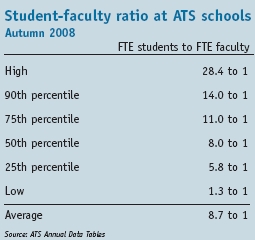 |
One of the things theological school financial officers worry about, as they help schools survive times of financial crisis, is faculty-student ratios. As a whole, theological schools have fewer students per faculty member than do other educational institutions — a few have a ratio as low as three to one. The two-year master's programs have been important in helping schools maintain a healthy ratio of at least 10 or 11 students per teacher. Since M.A. and M.Div. students share many of the same classes, a carefully planned M.A. program can be a cost effective way to fill classrooms. Strong M.A. enrollments have helped many tuition-driven schools stay relatively healthy, especially since two-year M.A. students often pay full price, while M.Div. students are more likely to depend on scholarships. Nevertheless, current enrollment trends give reason for caution. Meinzer points out that a decline in overall enrollment began before the beginning of the current recession. For schools that had forecast enrollment climbs of 3 percent to 5 percent per year, even steady enrollments can mean economic hardship. At least for the immediate future, it's not realistic to expect enrollments to rise.
Meinzer emphasizes how important it is for boards to understand enrollment trends and statistics — it's imperative that they have benchmarks and compare themselves to peer institutions, he says. ATS, through its Institutional Peer Review Reports, has the data to help theological schools make such comparisons and establish benchmarks in areas like finance, enrollment, and academic effectiveness.
But looking at comparable theological schools isn't enough. Meinzer urges schools also to pay attention to other educational institutions, like small liberal arts colleges. It is tempting for seminaries to dismiss such comparisons by saying, "We're just not like those places." But Robert Landrebe suggests that some schools outside theological education have figured out how to be innovative in ways that seminaries have not. "We can learn from them," he advises.
Financial realities
According to Landrebe, asking the right questions also depends on being aware of the economic models that support each of a school's major educational programs. It depends on knowing what the school's dominant revenue streams are. And boards need to know that programs that share the same base courses can be very affordable, while those that require many unique courses may be impossible to maintain.
To practice better oversight, Gordon-Conwell's board established a strategic planning task force composed of faculty leaders, administrators, and trustees. The task force results acknowledged the need to develop an economic model appropriate to the school's current situation and to make realistic plans for the future.
"In these times, it's key for seminaries to be innovative and willing to test new ideas," Landrebe says. To do that, boards, administrators, and faculty must learn from one another and integrate their understanding of the school's mission with financial realities. A task force can include representative members of the board, administration, and faculty who meet over several months, creating trust, generating creative thinking, and garnering buy-in for necessary changes.
Know your audience
Some theological schools may profit from doing careful marketing research. When Gordon-Conwell received a grant from the Kern Family Foundation to support innovation in theological education, the seminary used part of the money to hire a marketing research firm specializing in online education. The mandate: discover what students are seeking in M.Div. and M.A. programs and what laypeople (and even some clergy) are seeking in certificate programs. They expect this research to give them a better idea of how many potential M.Div. and M.A. program students are interested in Web-delivered courses with some on-campus intensives and how many potential students prefer certificate programs that provide theological education without granting a degree.
Landrebe says that the market research firm will conduct live testing that can help the school project reliable enrollment numbers. He expects the marketing researchers to tell them how many inquiries are likely to result from a particular advertising campaign, and from those inquiries, how many applications and matriculated students will result. "That's the kind of information that is very helpful to a school in judging the risk and reward of investing in new kinds of programs," Landrebe says.
With objective data, seminary leaders can assess when students take courses and when they study; where and how often they gather, how much they can pay for their education, and how they can make appropriate use of technology while fostering learning communities of spiritually formed students. Landrebe suggests that contemporary seminaries have significant opportunities to reach previously underserved students. "For the sake of mission and the kingdom, we need to adapt," he says.
Preparing more students for ministry
New York Theological Seminary has long been a pioneer in educational innovation. Its mission is to train leaders for churches and other religious bodies in "urban contexts," and these contexts are increasingly global, thanks to close connections between New York and congregations around the world. "The leadership of the New York Korean church goes regularly to Seoul," says Dale Irvin, the president of the seminary. "And we go along and provide programs there."
Unlike many schools, New York Theological Seminary enjoys growing enrollment in both its degree and certificate programs. During the past four years, M.Div. head count has risen from 200 to 265, and the school expects it to reach 300 soon. Irvin suggests that the growth is a result of at least five factors:
-
Flexibility. "We have always been a seminary that keeps constant contact with what's happening in the churches and responds to those needs as they come up," Irvin says. Certificate and lay training programs, more than the accredited degrees, keep the seminary constantly involved with churches and become steady feeders into its M.Div. program.
-
Clearly defined audience. New York Theological Seminary's master of theological studies and M.Div. degrees are designed for people who are already in ministry, who are bivocational, or who are contemplating a shift from secular to religious work. On the other hand, the certificate in Christian ministry, a nondegree course of study, provides a basic theological education to both lay and ordained church leaders. Courses in Spanish and Korean are offered in all these programs, and doctor of ministry students can do their entire program in either language.
-
Nontraditional class schedules. All New York Theological Seminary programs are part-time and nonresidential; most classes are held in the evening or on weekends. A few students do finish the M.Div. in three years or the master of theological studies in two, but most take four to five, and a few as long as seven.
-
New technology. All of New York Theological Seminary's nondegree certificate programs can be completed online. Several master of professional studies courses are also online each semester. But most often, online resources supplement classroom instruction. Every class is set up inside a flexible online learning system, which allows students to meet in online work groups—invaluable for those who commute into the city once or twice a week.
-
An active and involved board. The board provides guidance through its participation in a rolling, five-year strategic planning process, updated each year. An annual retreat provides an opportunity for the faculty and board to learn about theological education at other seminaries and about religion in New York. The Auburn Studies, published by Auburn Seminary's Center for the Study of Theological Education have been important resources.
New York Theological Seminary has no campus of its own. The school's office space is rented from the Interchurch Center in Manhattan, while many classes are taught across the street in the Riverside Church. Classes in the seminary's certificate programs take place at 12 sites around the metropolitan area. Students use the libraries of nearby Columbia University and Union Theological Seminary, as well as the 11 million-volume New York Public Library.
Whatever a theological school's context, Irvin believes, it needs first of all to understand its mission and to ask whether that mission meets the actual needs of the churches and other religious communities it serves. "We constantly remind ourselves that our primary goal is to prepare men and women for professional leadership in the church, not to perpetuate our own careers," he says.
When enrollment declines, split the program in two
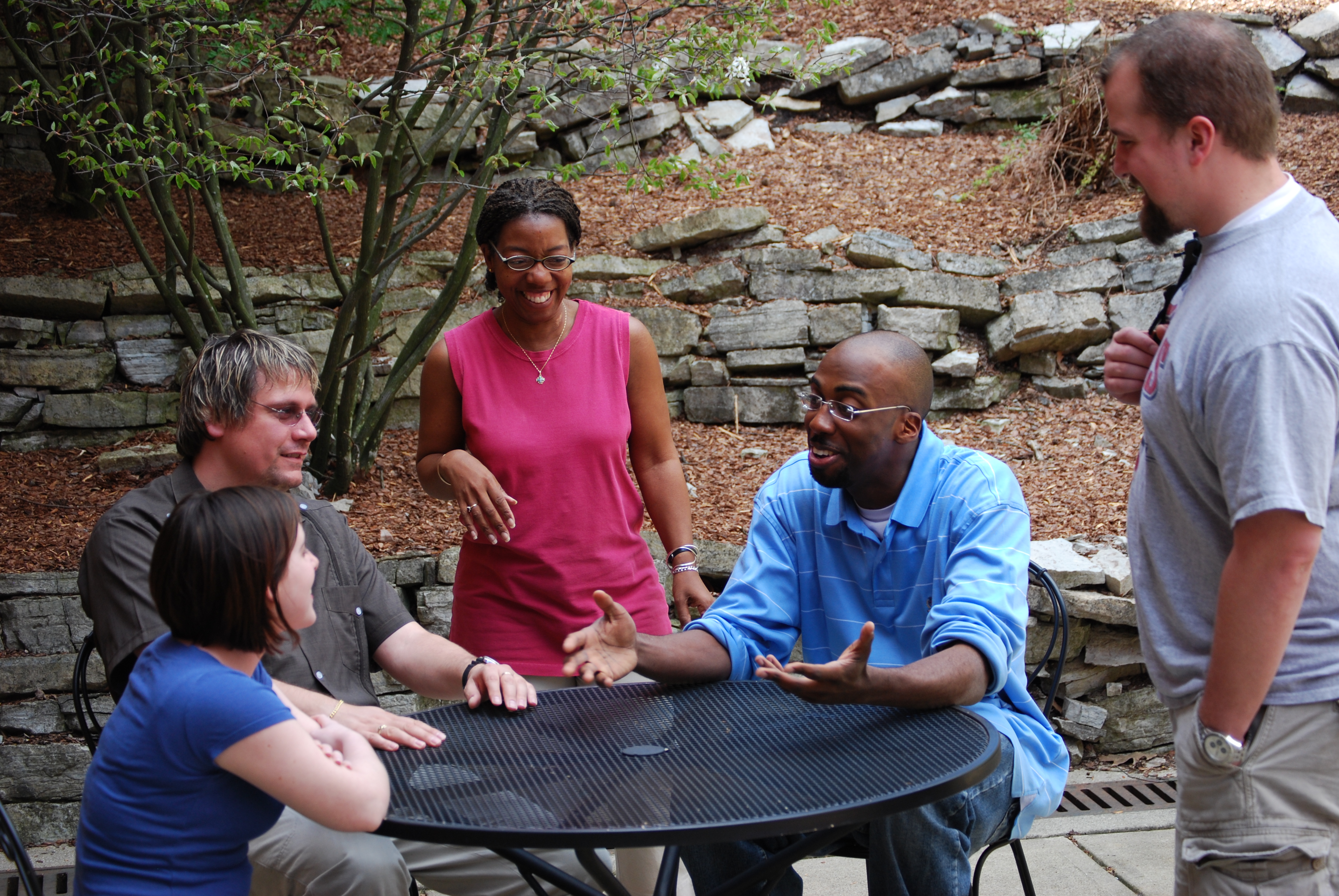 |
| At Trinity Lutheran Seminary, the master's degree in lay ministry is being replaced by two new programs -- one in Christian education and another in youth and family ministries. |
When Trinity Lutheran Seminary saw that enrollment in its master of arts in lay ministry was dwindling, it decided not to eliminate the program but to split it in two. The degree was launched some 20 years ago, when the Evangelical Lutheran Church in America, the seminary's denomination, encouraged the seminary to offer higher-level training to lay people in areas like church administration and Christian education, says Donald Huber, the school's academic dean. It started out as a grab bag of concentrations, but over time, more and more students congregated in just two of the concentrations: Christian education and youth and family ministries.
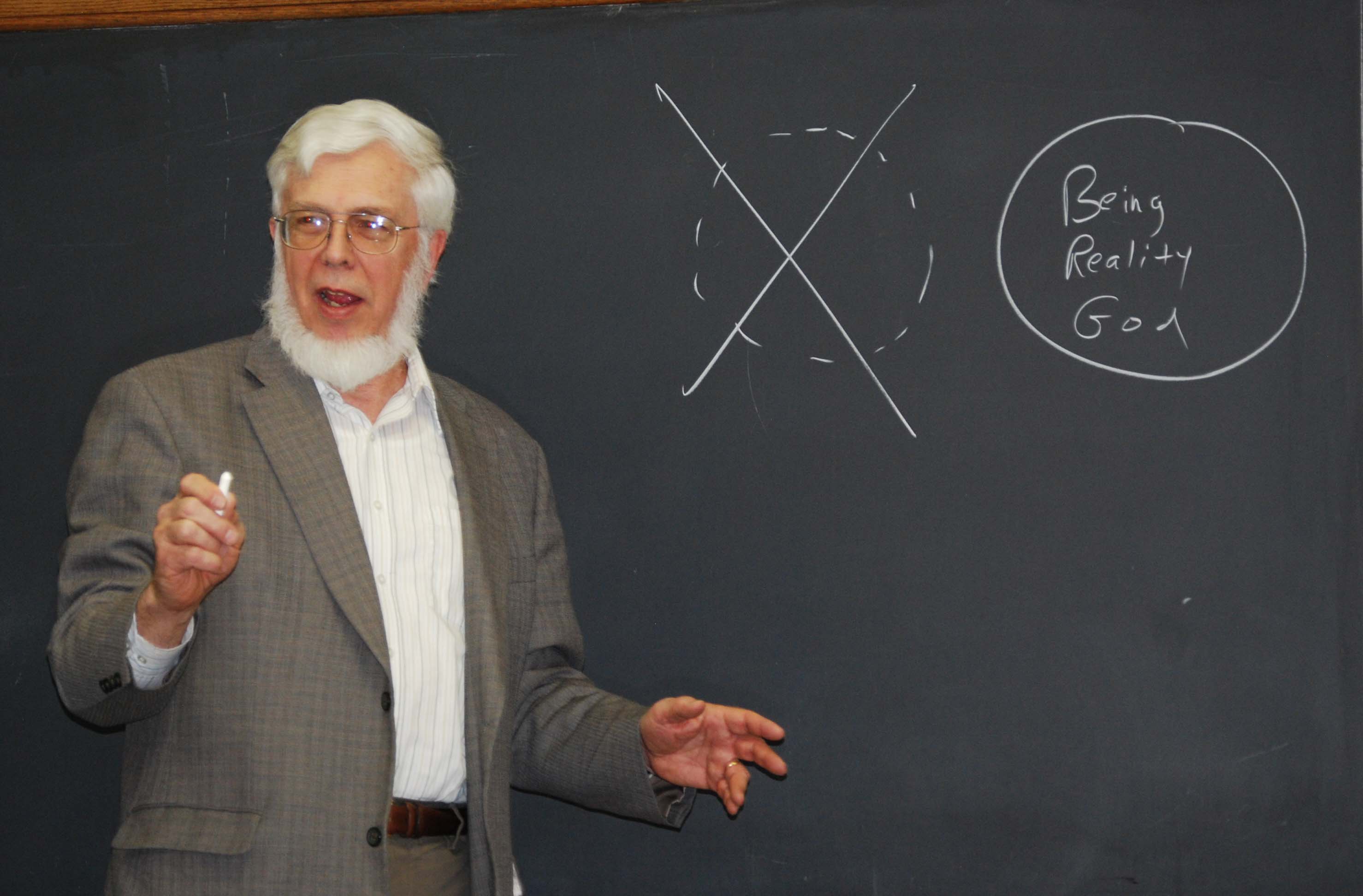 |
| Donald Huber, Trinity's academic dean |
This fall the master's in lay ministry will be gone, replaced by an M.A. in Christian education and an M.A. in youth and family ministries. Since the two new degrees have been announced, there has been an immediate increase in applications and enrollment — so far, all in the youth and family ministry degree. The seminary had to add a few new courses for these new master's degrees, but no new teachers, since it already has two fulltime faculty in Christian education and youth ministry. Like most institutions in this difficult economic climate, Trinity isn't hiring and has decreased its adjunct faculty. It's not a good time to add ambitious new programs. But sometimes a lot can be accomplished simply by carefully examining and reconfiguring what one already has.